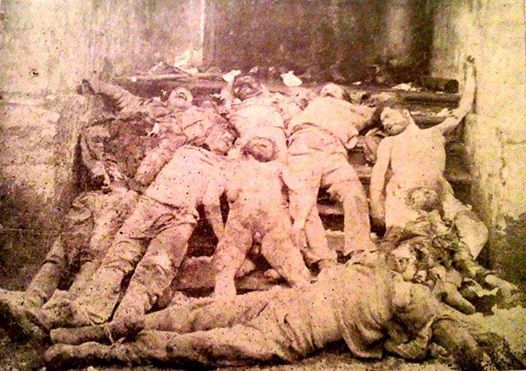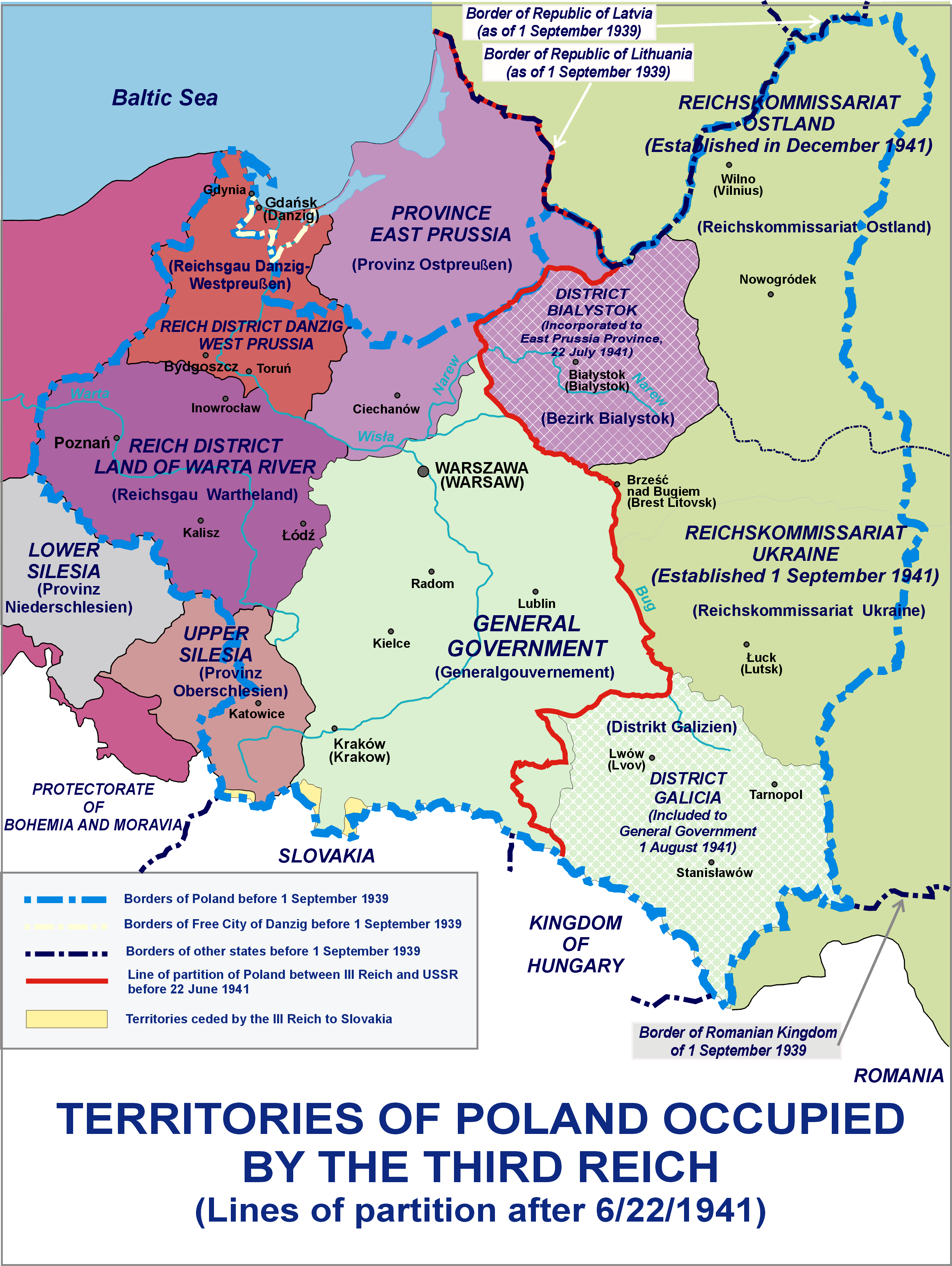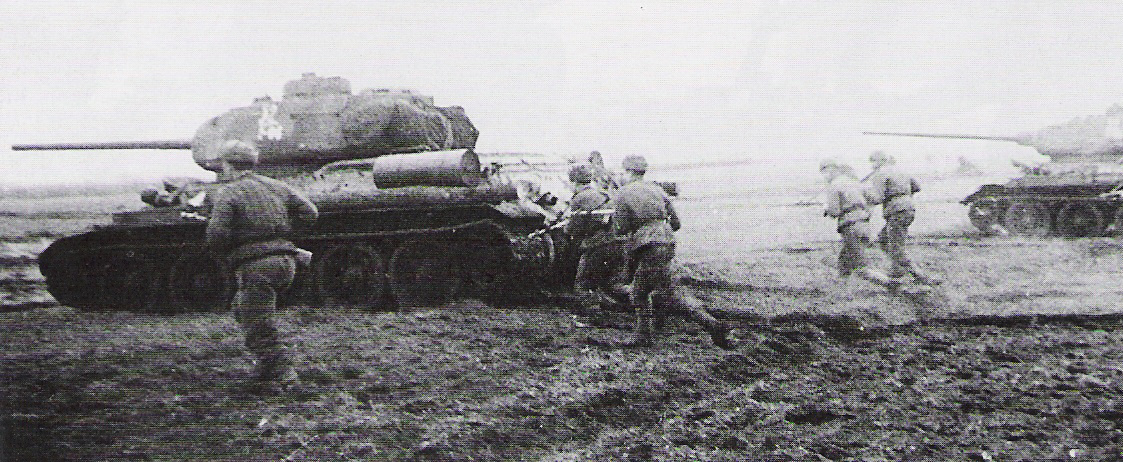|
Red Army Atrocities
From 1917 to 1991, a multitude of war crimes and crimes against humanity were carried out by the Soviet Union or any of its Soviet republics, including the Russian Soviet Federative Socialist Republic and its armed forces. They include acts which were committed by the Red Army (later called the Soviet Army) as well as acts which were committed by the country's secret police, NKVD, including its Internal Troops. In many cases, these acts were committed upon the direct orders of Soviet leaders Vladimir Lenin and Joseph Stalin in pursuance of the early Soviet policy of Red Terror as a means to justify executions and political repression. In other instances they were committed without orders by Soviet troops against prisoners of war or civilians of countries that had been in armed conflict with the Soviet Union, or they were committed during partisan warfare. A significant number of these incidents occurred in Northern, Central, and Eastern Europe before, during, and in the afte ... [...More Info...] [...Related Items...] OR: [Wikipedia] [Google] [Baidu] [Amazon] |
Katyn Massacre
The Katyn massacre was a series of mass killings under Communist regimes, mass executions of nearly 22,000 Polish people, Polish military officer, military and police officers, border guards, and intelligentsia prisoners of war carried out by the Soviet Union, specifically the NKVD (the Soviet secret police), at Joseph Stalin's order in April and May 1940. Though the killings also occurred in the Tver#20th century, Kalinin and Kharkiv NKVD prisons and elsewhere, the massacre is named after the Katyn forest, where some of the mass graves were first discovered by Nazi German forces in 1943. The massacre is qualified as a Crimes against humanity, crime against humanity, Crime of aggression, crime against peace, war crime and (within the Polish Penal Code) a Communist crimes (Polish legal concept), Communist crime. According to a 2009 resolution of the Polish parliament's Sejm, it bears the hallmarks of a genocide. The order to execute captive members of the Polish officer corps wa ... [...More Info...] [...Related Items...] OR: [Wikipedia] [Google] [Baidu] [Amazon] |
Rape During The Soviet Occupation Of Poland
The subject of rape during the Soviet occupation of Poland at the end of World War II in Europe was absent from the postwar historiography until the dissolution of the Soviet Union, although the documents of the era show that the problem was serious both during and after the advance of Soviet forces against Nazi Germany in 1944–1945. The lack of research for nearly half a century regarding the scope of sexual violence by Soviet males, wrote Katherine Jolluck, had been magnified by the traditional taboos among their victims, who were incapable of finding "a voice that would have enabled them to talk openly" about their wartime experiences "while preserving their dignity."Katherine R. Jolluck"The Nation's Pain and Women's Shame."(In) DrKatherine R. Jolluckof Stanford University is the author of ''Exile and Identity: Polish Women in the Soviet Union during WWII'' (2002), and ''Gulag Voices: Oral Histories of Soviet Incarceration and Exile'' (2011), se inauthor:"Katherine R. Jolluck ... [...More Info...] [...Related Items...] OR: [Wikipedia] [Google] [Baidu] [Amazon] |
Gegenmiao Massacre
The Gegenmiao massacre or the Gegenmiao incidentMayumi Itoh, ''Japanese War Orphans in Manchuria: Forgotten Victims of World War II'', Palgrave Macmillan, April 2010, p. 34./ref> was a war crime by the Red Army and a part of the local Chinese population against over half of a group of 1,800 Japanese people, Japanese women and children who had taken refuge in the lamasery Gegenmiao/Koken-miao (葛根廟) on August 14, 1945, during the Khingan–Mukden Operation in Soviet invasion of Manchuria. Soviet people, Soviet soldiers committed the massacre in Gegenmiao/Koken-miao (present day: Gegenmiao zhen; :zh:葛根庙镇, 葛根廟鎭), a town in the Horqin Right Front Banner of the Hinggan League of Inner Mongolia. The Red Army shot refugees, ran them over with tanks or trucks, and bayoneted them after they raised a white flag. After two hours, Red Army soldiers had murdered well over one thousand Japanese refugees, mostly women and children. Angry Chinese civilians chased a grou ... [...More Info...] [...Related Items...] OR: [Wikipedia] [Google] [Baidu] [Amazon] |
Soviet Invasion Of Manchuria
The Soviet invasion of Manchuria, formally known as the Manchurian Strategic Offensive Operation or simply the Manchurian Operation () and sometimes Operation August Storm, began on 9 August 1945 with the Soviet Union, Soviet invasion of the Empire of Japan's puppet state of Manchukuo, which was situated in Japanese-occupied Manchuria. It was the largest campaign of the 1945 Soviet–Japanese War, which resumed hostilities between the Union of Soviet Socialist Republics and the Empire of Japan after almost six years of peace. Soviet gains on the continent were Manchukuo, Mengjiang (the northeast section of present-day Inner Mongolia) and northern Korea. The Soviet entry into this theater of the war and the defeat of the Kwantung Army were significant factors in the Japanese government's decision to Surrender of Japan, surrender unconditionally, as it became apparent that the Soviet Union had no intention of acting as a third party in negotiating an end of the war on conditional ... [...More Info...] [...Related Items...] OR: [Wikipedia] [Google] [Baidu] [Amazon] |
Siege Of Budapest
The siege of Budapest or battle of Budapest was the 50-day-long encirclement by Soviet and Romanian forces of the Hungarian capital of Budapest, near the end of World War II. Part of the broader Budapest Offensive, the siege began when Budapest, defended by Hungarian and German troops, was encircled on 26 December 1944 by the Red Army and the Romanian Army. During the siege, about 38,000 civilians died through starvation, military action, and mass executions of Jews by the far-right Hungarian nationalist Arrow Cross Party. The city unconditionally surrendered on 13 February 1945. It was a strategic victory for the Allies in their push towards Berlin. General situation Having suffered nearly 200,000 deaths in three years fighting the Soviet Union, and with the front lines approaching its own cities, Hungary was by early 1944 ready to exit World War II. As political forces within Hungary pushed for an end to the fighting, Germany preemptively launched Operation Margarethe on ... [...More Info...] [...Related Items...] OR: [Wikipedia] [Google] [Baidu] [Amazon] |
Rape During The Liberation Of Serbia
In late 1944 and early 1945, rapes were committed against women by the Soviet Red Army soldiers during their advance to Berlin through Serbia during the Second World War. Soviets during liberation of Belgrade Milovan Đilas spoke about these events at the end of World War II in his memoirs. The Germans began to retreat, and mass rapes by members of the Red Army began. There was also a case where a mother-in-law was killed because she did not want to free the bed for the rape of her daughter-in-law. Soviet soldiers were repeatedly breaking into apartments and houses in Belgrade and the surrounding area, and they were making decisions on which soldier would rape the daughter and which would rape the mother. In order to avoid rape, women and girls hid in attics, sewers, holes in the ground, sheds and basements. The situation was so bad that Tito requested a personal audience with Stalin through Đilas, asking him to stop the wave of rapes of Yugoslav women. Stalin, the head of t ... [...More Info...] [...Related Items...] OR: [Wikipedia] [Google] [Baidu] [Amazon] |
DF Yugoslavia
Democratic Federal Yugoslavia, also known as Democratic Federative Yugoslavia (DF Yugoslavia or DFY), was a provisional state established during World War II on 29 November 1943 through the Second Session of the Anti-Fascist Council for the National Liberation of Yugoslavia (AVNOJ). The National Committee for the Liberation of Yugoslavia (NKOJ) was its original executive body. Throughout its existence it was governed by Marshal Josip Broz Tito as prime minister. It was recognized by the Allies at the Tehran Conference, along with the AVNOJ as its deliberative body. The Yugoslav government-in-exile of King Peter II in London, partly due to pressure from the United Kingdom,Walter R. Roberts. ''Tito, Mihailović, and the allies, 1941-1945''. Duke University Press, 1987. Pp. 288. recognized the AVNOJ government with the Treaty of Vis, signed on 16 June 1944 between the prime minister of the government-in-exile, Ivan Šubašić, and Tito. With the Treaty of Vis, the government-in-ex ... [...More Info...] [...Related Items...] OR: [Wikipedia] [Google] [Baidu] [Amazon] |
Rape During The Occupation Of Germany
As Allied troops entered and occupied German territory during the later stages of World War II, mass rapes of women took place both in connection with combat operations and during the subsequent occupation of Germany by soldiers from all advancing Allied armies, although a majority of scholars agree that the records show that a majority of the rapes were committed by Soviet occupation troops. Not just Allied soldiers, but also German Wehrmacht soldiers raped a large number of German women and girls during the war, as evidenced by numerous court-martial cases against German soldiers charged with raping German women. The wartime rapes were followed by decades of silence. According to historian Antony Beevor, whose books were banned in 2015 from some Russian schools and colleges, NKVD (Soviet secret police) files have revealed that the leadership knew what was happening, but did little to stop it. It was often rear echelon units who committed the rapes. According to profes ... [...More Info...] [...Related Items...] OR: [Wikipedia] [Google] [Baidu] [Amazon] |
Soviet Partisans In Finland
The Soviet partisans in Finland were an irregular military force which attacked Finnish military and civilian targets during the Continuation War, a sub-theater of World War II active between 1941 and 1944. They were based in East Karelia in the Soviet territory and conducted long-range penetration reconnaissance and raids inside Finnish borders, often attacking weak targets such as remote border villages or ambushing vehicles. Around 170 Finnish civilians were killed and 50 wounded in the raids. Partisan activity and raids Around 2,400 Soviet partisans at most operated on the Karelian Front. They targeted enemy soldiers and officers, bridges, garrisons and railways. Unlike Soviet partisans elsewhere, they lacked continuously operating headquarters behind the enemy lines and often stayed there for just 15–20 days at a time. Their goals inside Finnish borders were to destroy military communications, disrupt economic activity of the Finnish population, and cause panic and uncertai ... [...More Info...] [...Related Items...] OR: [Wikipedia] [Google] [Baidu] [Amazon] |
Soviet Occupation Of Bessarabia And Northern Bukovina
Between 28 June and 3 July 1940, the Soviet Union occupied Bessarabia and Northern Bukovina, following an ultimatum made to Romania on 26 June 1940 that threatened the use of force. Those regions, with a total area of and a population of 3,776,309 inhabitants, were incorporated into the Soviet Union. On 26 October 1940, six Romanian islands on the Chilia branch of the Danube, with an area of , were also occupied by the Soviet Army. The Soviet Union had planned to accomplish the annexation with a full-scale invasion, but the Romanian government, responding to the Soviet ultimatum delivered on 26 June, agreed to withdraw from the territories to avoid a military conflict. The use of force had been made illegal by the Conventions for the Definition of Aggression in July 1933, but from an international legal standpoint, the new status of the annexed territories was eventually based on a formal agreement through which Romania consented to the retrocession of Bessarabia and cession ... [...More Info...] [...Related Items...] OR: [Wikipedia] [Google] [Baidu] [Amazon] |
Soviet Deportations From Lithuania
Soviet deportations from Lithuania were a series of 35 mass deportations carried out in Lithuania, a country that was occupied as a Lithuanian Soviet Socialist Republic, constituent socialist republic of the Soviet Union, in 1941 and 1945–1952. At least 130,000 people, 70% of them women and children, were forcibly transported to labor camps and other Forced settlements in the Soviet Union, forced settlements in remote parts of the Soviet Union, particularly in the Irkutsk Oblast and Krasnoyarsk Krai. Among the deportees were about 4,500 Poles. Deportations included Lithuanian partisans and their sympathizers or political prisoners deported to Gulag labor camps (Operation Vesna). Deportations of the civilians served a double purpose: repressing resistance to Sovietization policies in Lithuania and providing free labor in sparsely inhabited areas of the Soviet Union. Approximately 28,000 of Lithuanian deportees died in exile due to poor living conditions. After Stalin's death in 19 ... [...More Info...] [...Related Items...] OR: [Wikipedia] [Google] [Baidu] [Amazon] |
Soviet Occupation Of Lithuania
The occupation of the Baltic states was a period of annexation of Estonia, Latvia and Lithuania by the Soviet Union from 1940 until its dissolution in 1991. For a period of several years during World War II, Nazi Germany occupied the Baltic states after it invaded the Soviet Union in 1941. The initial Soviet invasion and occupation of the Baltic states began in June 1940 under the Molotov–Ribbentrop Pact, made between the Soviet Union and Nazi Germany in August 1939 before the outbreak of World War II. The three independent Baltic countries were annexed as constituent Republics of the Soviet Union in August 1940. Most Western countries did not recognise this annexation, and considered it illegal. In July 1941, the occupation of the Baltic states by Nazi Germany took place, just weeks after its invasion of the Soviet Union. The Third Reich incorporated them into its ''Reichskommissariat Ostland''. In 1944, the Soviet Union recaptured most of the Baltic states as a result of ... [...More Info...] [...Related Items...] OR: [Wikipedia] [Google] [Baidu] [Amazon] |






